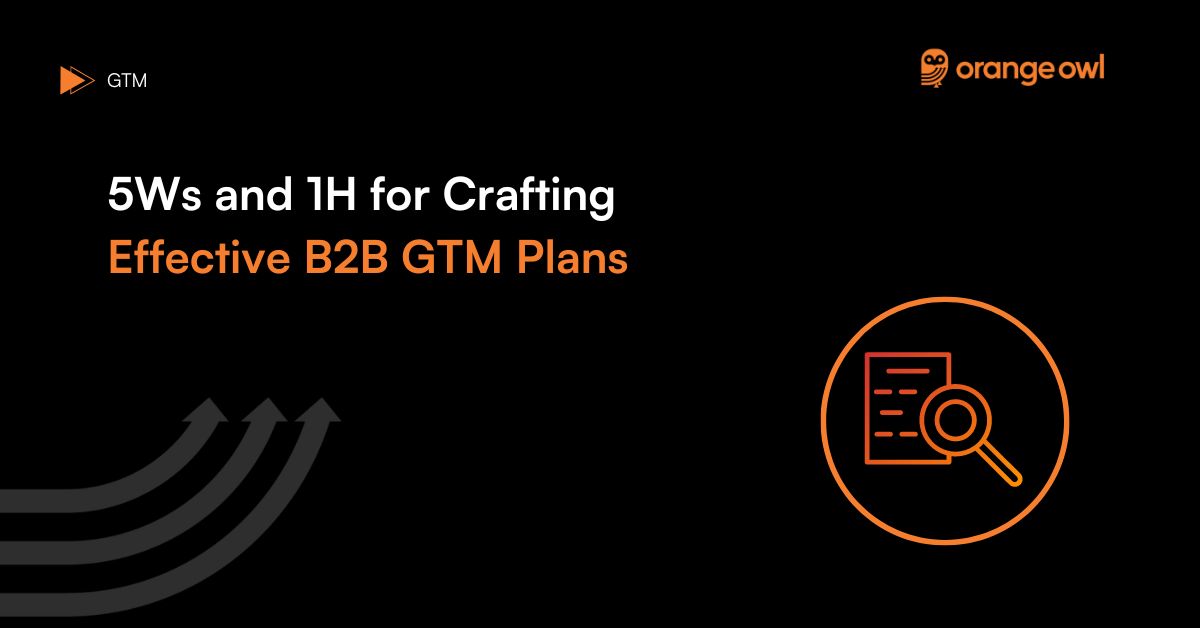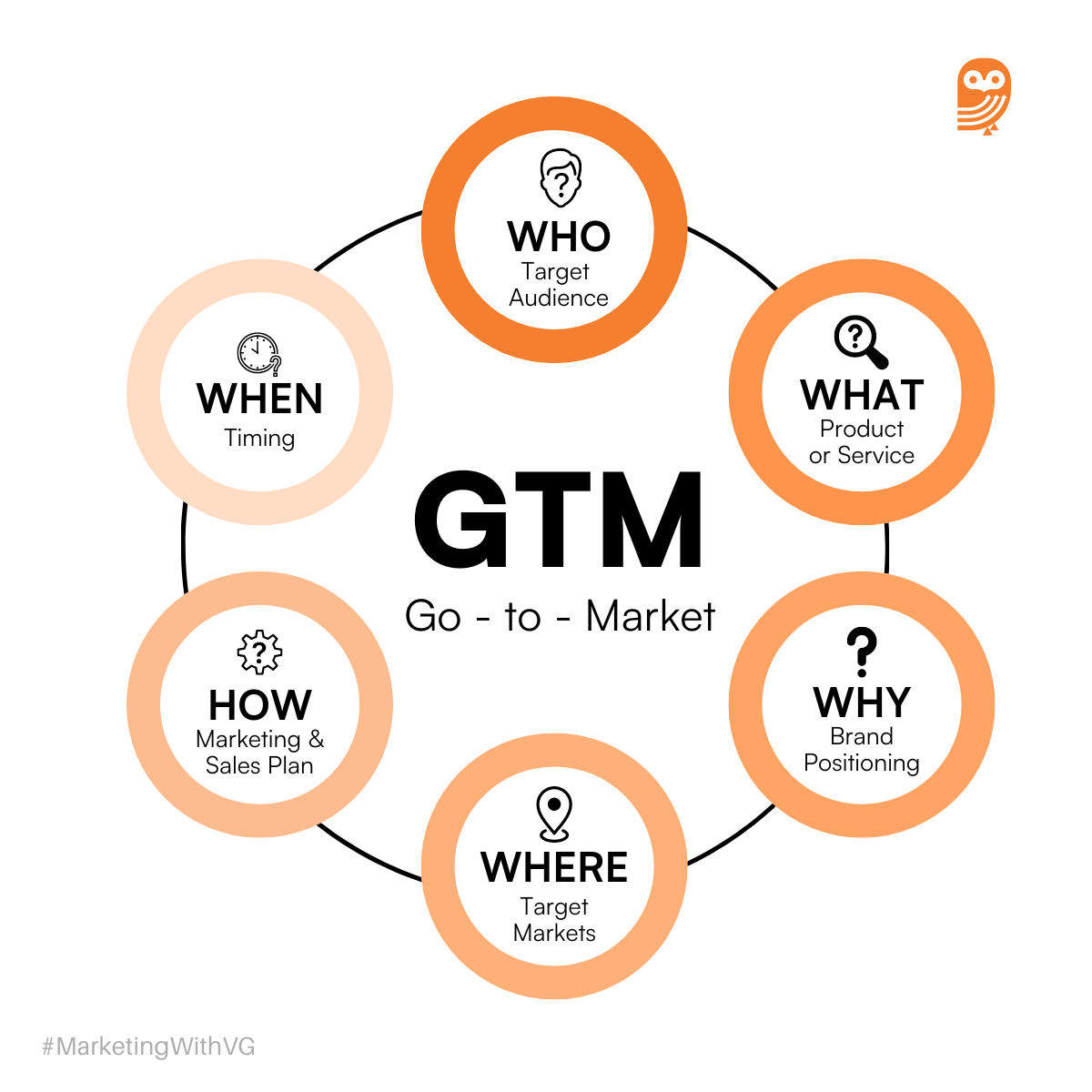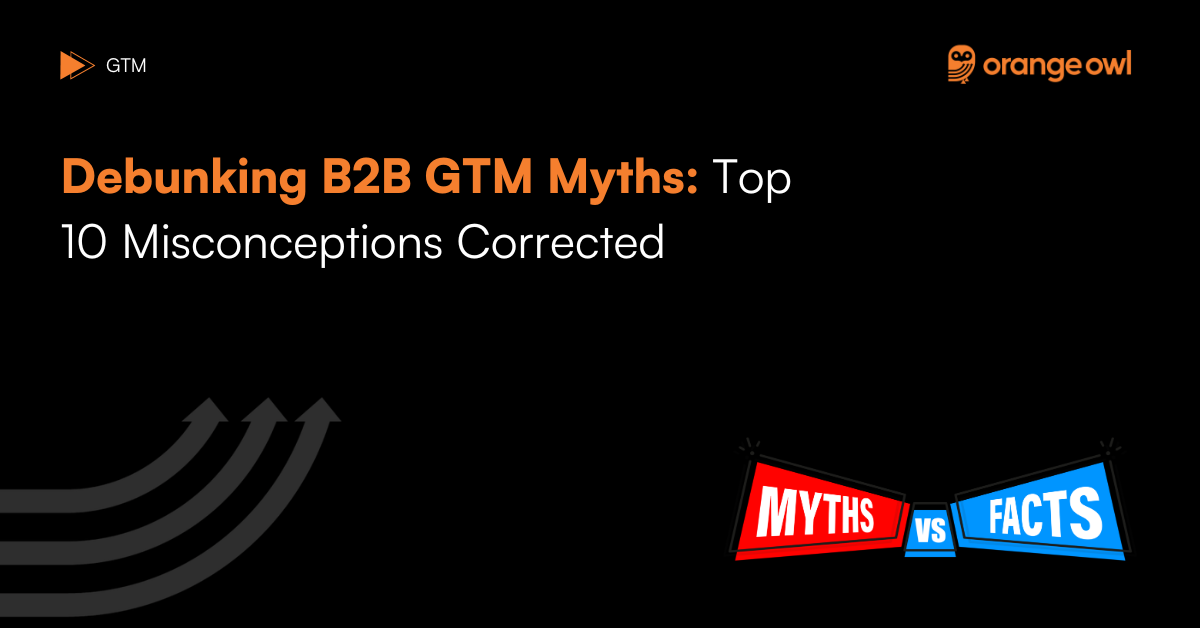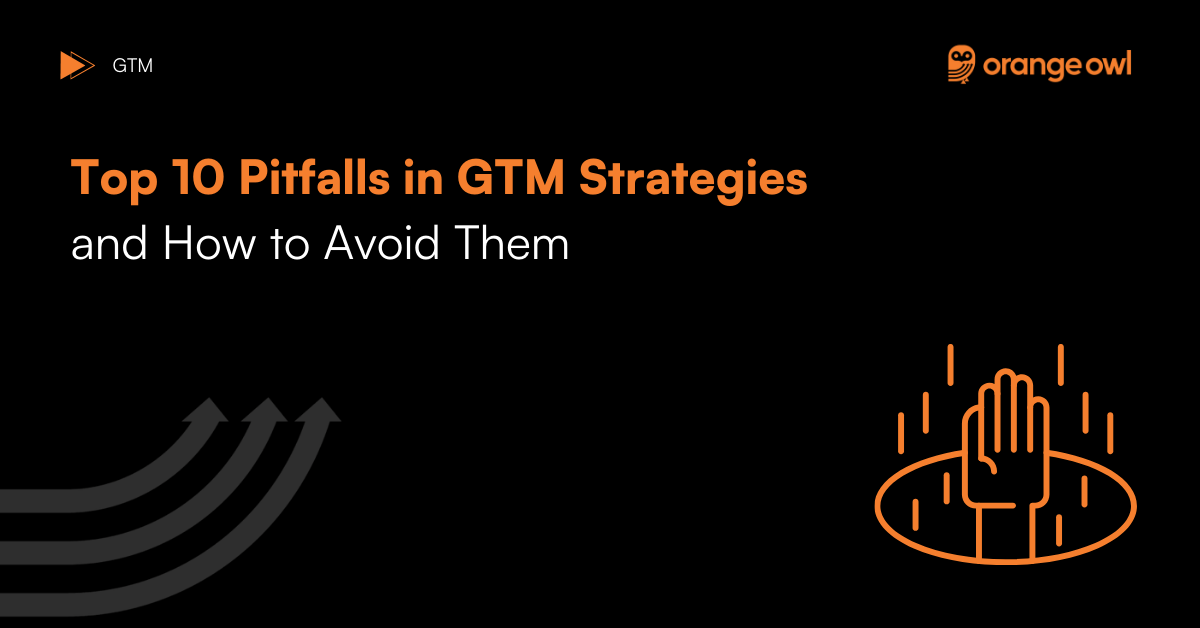5Ws and 1H for Crafting Effective B2B GTM Plans
Orange Owl
May 28, 2024

Table of Contents
Welcome back as we dive into the world of B2B Go-To-Market (GTM) strategy! In this blog, we’re embarking on a journey to uncover the key elements of successful GTM strategies – the who, what, why, where, when, and how. By the end of the blog, you’ll gain valuable insights into crafting a detailed GTM strategy that drives results. So, buckle up and get ready to explore the secrets of B2B marketing success together!
GTM Strategies: The 5Ws and 1H
Who – Identifying Your Target Audience
The journey begins with identifying your target audience – the cornerstone of any effective GTM strategy. Who are your ideal customers, and what motivates their purchasing decisions?
Example: SAP, an enterprise software company carefully segments its audience based on industry, company size, and specific business needs. By tailoring marketing efforts to these unique customer groups, SAP ensures its message resonates with the right audience at the right time.
What – Defining Your Product or Service
Next, it’s crucial to define your product or service and articulate its unique value proposition. What problem does your offering solve, and what sets it apart from competitors?
Example: Consider cloud computing giant Amazon Web Services (AWS), renowned for its scalable cloud solutions tailored to the diverse needs of B2B clients. By clearly articulating its product offerings, AWS attracts businesses seeking flexible and cost-effective cloud infrastructure solutions.
Why – Establishing Your Brand Positioning
Understanding why your brand exists and how it differs from competitors is essential for crafting a compelling GTM strategy. Why should customers choose your product or service over alternatives?
Example: Software company Salesforce, positions itself as a leader in cloud-based CRM solutions. Salesforce’s emphasis on customization, scalability, and seamless integration sets it apart in the competitive B2B software market.
Where – Identifying Target Markets
Now, let’s explore where your target markets are located and how to reach them effectively. Where are your ideal customers geographically, and what channels do they frequent?
Example: Telecommunications company Verizon, tailors its marketing efforts to specific regions and demographics. By ensuring its messaging resonates with local businesses and decision-makers, Verizon effectively connects with its target audience.
When – Timing Your Market Entry
Timing is critical in GTM strategy – knowing when to introduce your product or service can significantly impact its success. When is the optimal time to enter the market, and what trends or events should you leverage?
Example: Cybersecurity firm CrowdStrike’s market entry timing. CrowdStrike launched its endpoint security solutions in 2011, amidst a surge in cyber threats and high-profile data breaches affecting businesses worldwide. By entering the market at a time of heightened cybersecurity concerns, CrowdStrike positioned itself as a trusted partner for organizations seeking advanced threat detection and response capabilities.
How – Executing Your Marketing & Sales Plan
Finally, let’s discuss how you’ll execute your GTM strategy and bring it to life. How will you market and sell your product or service to your target audience?
Example: Technology company Microsoft, which adopts a multi-channel approach to promote its Azure cloud platform. By leveraging digital marketing, partnerships, and direct sales efforts, Microsoft effectively reaches businesses of all sizes, driving engagement and conversion.
Conclusion
In conclusion, B2B companies seeking to develop thorough GTM strategies must understand the 5W and 1H framework by addressing the essential queries of who, what, why, where, when, and how businesses can develop focused, effective marketing and sales campaigns that launch company expansion and prosperity. Adopting this framework is the first step in achieving GTM excellence in the cutthroat B2B market, regardless of your company’s size. Let’s harness the power of strategic thinking and chart a course for B2B success together.!

FAQ’s
The most crucial element is the unique value proposition. Clearly articulating how the product or service solves specific problems and differentiates from competitors is essential for attracting and retaining customers.
Brand positioning is critical because it establishes a clear and compelling reason for customers to choose your product over others. It helps in building brand identity, trust, and loyalty among target audiences.
B2B companies should focus on the channels most frequented by their target audience, such as industry-specific websites, professional social media platforms (like LinkedIn), trade shows, webinars, and email marketing.
The best time to launch is when there is a clear market need or demand, such as during industry trends, technological advancements, or after thorough market research indicating readiness. Timing can also align with industry events or fiscal planning periods.
Successful execution involves detailed planning, cross-functional collaboration, continuous monitoring, and flexibility to adapt to market feedback. Utilizing project management tools and establishing clear KPIs are also crucial.
Ideal customers are those who will benefit most from your product or service. They can be identified through market segmentation, analyzing existing customer data, and developing detailed buyer personas based on industry, company size, and specific business needs.
A comprehensive GTM plan should include market research, target audience identification, value proposition, competitive analysis, brand positioning, marketing and sales strategies, distribution channels, timeline, budget, and metrics for success.
A multi-channel approach increases reach and engagement by meeting potential customers where they are. It ensures that the company’s message is consistent and accessible across various platforms and touchpoints, enhancing the chances of conversion.
Success can be measured through specific KPIs such as lead generation, conversion rates, sales growth, market penetration, customer acquisition costs, and customer lifetime value. Regular analysis and adjustments based on these metrics help in fine-tuning the strategy for better outcomes.


